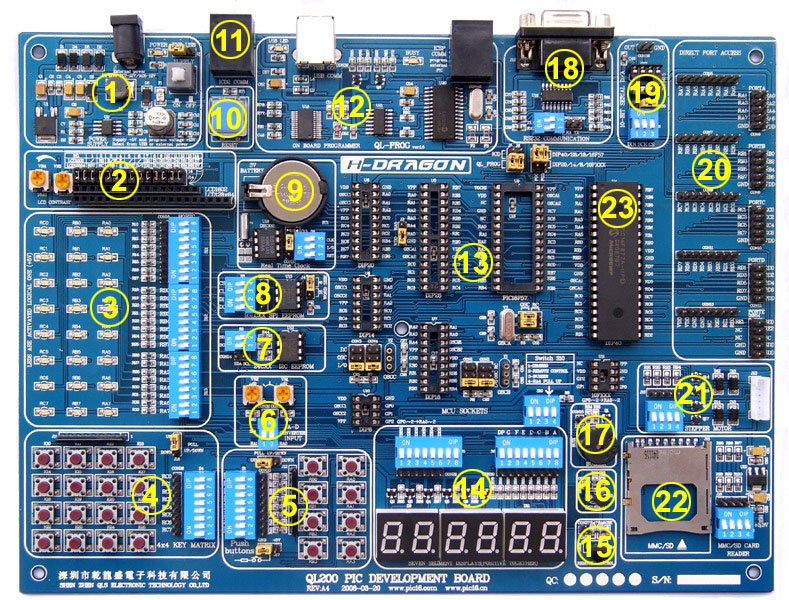Structs (struct) and Enums (enum) are powerful features in Embedded C programming that allow better organization of data.
In PIC microcontrollers, these help in managing sensor data, configurations, registers, and peripheral settings efficiently.
This tutorial will cover:
- What are Structs and Enums?
- How to use Structs in Embedded C?
- How to use Enums for better readability?
- Real-world Embedded C examples using PIC microcontrollers
What are Structs (struct) and Enums (enum)?
Structs (struct)
A struct (structure) is a user-defined data type that groups multiple related variables of different data types under one name.
Use Case in Embedded Systems:
- Storing sensor data (temperature, pressure, humidity).
- Managing I/O pin configurations.
- Handling UART communication settings.
Enums (enum)
An enum (enumeration) is a user-defined data type that assigns meaningful names to integer constants.
Use Case in Embedded Systems:
- Defining state machines.
- Representing error codes.
- Managing peripheral modes (ADC, PWM, UART baud rates).
How to Use Structs in Embedded C for PIC?
Declaring and Using a Struct
#include <xc.h>
typedef struct {
unsigned int temperature;
unsigned int humidity;
unsigned int pressure;
} SensorData;
void main() {
SensorData sensor; // Declare a struct variable
sensor.temperature = 25;
sensor.humidity = 50;
sensor.pressure = 1000;
while(1);
}
Key Points:
- typedef struct { … } SensorData; creates a new data type.
- sensor.temperature = 25; assigns values.
Using Structs to Group Peripheral Registers
Structs are useful when working with hardware registers in PIC.
Example: Struct for PORT Configuration
#include <xc.h>
typedef struct {
unsigned char TRIS; // Direction Register
unsigned char PORT; // Input/Output Register
unsigned char LAT; // Latch Register
} GPIO;
#define LED_PIN PORTBbits.RB0
void main() {
GPIO portB;
portB.TRIS = 0x00; // Set PORTB as output
portB.PORT = 0x01; // Set RB0 HIGH
while(1);
}
Why Use Structs?
- Easier to manage and understand register groups.
- Reduces code complexity.
Passing Structs to Functions
Functions can take structs as parameters.
Example: Function to Update Sensor Data
#include <xc.h>
typedef struct {
unsigned int temperature;
unsigned int humidity;
} SensorData;
void updateSensor(SensorData *data) {
data->temperature = 30; // Modify struct members
data->humidity = 55;
}
void main() {
SensorData sensor;
updateSensor(&sensor); // Pass struct by reference
while(1);
}
Key Points:
- updateSensor(SensorData *data) receives pointer to struct.
- data->temperature = 30; modifies values inside the function.
Structs for UART Communication Settings
Structs are great for managing UART settings.
Example: Struct for UART Configuration
#include <xc.h>
typedef struct {
unsigned long baudRate;
unsigned char parity;
unsigned char stopBits;
} UART_Config;
void initUART(UART_Config config) {
// Set baud rate
SPBRG = (_XTAL_FREQ / (16 * config.baudRate)) - 1;
// Configure parity and stop bits
TXSTA = (config.stopBits << 3) | (config.parity << 4);
}
void main() {
UART_Config uart1 = {9600, 0, 1}; // 9600 baud, No Parity, 1 Stop Bit
initUART(uart1);
while(1);
}
Advantages:
- Makes code modular and reusable.
- Easy to change UART settings without modifying multiple lines.
How to Use Enums in Embedded C for PIC?
Enums allow meaningful names instead of raw numbers.
Example: Enum for LED States
#include <xc.h>
typedef enum {
LED_OFF,
LED_ON
} LED_State;
void main() {
LED_State led = LED_OFF;
while(1) {
if (led == LED_OFF) {
PORTBbits.RB0 = 0; // Turn LED OFF
} else {
PORTBbits.RB0 = 1; // Turn LED ON
}
}
}
Key Benefits:
- Improves code readability (LED_OFF vs 0).
- Avoids magic numbers.
Using Enums for Error Codes
Enums can be used for error handling.
Example: Enum for ADC Errors
#include <xc.h>
typedef enum {
ADC_SUCCESS = 0,
ADC_OVERFLOW = 1,
ADC_TIMEOUT = 2
} ADC_Status;
ADC_Status readADC() {
// Simulated ADC Read
return ADC_SUCCESS;
}
void main() {
ADC_Status status = readADC();
if (status == ADC_OVERFLOW) {
// Handle overflow error
}
while(1);
}
Why Use Enums for Errors?
- Makes error handling clear.
- Avoids using raw numbers (if(status == 1) is less readable).
Using Enums for State Machines
State machines are common in embedded systems (e.g., button debounce, motor control).
Example: Enum for Button Press State
#include <xc.h>
typedef enum {
BUTTON_RELEASED,
BUTTON_PRESSED,
BUTTON_HELD
} ButtonState;
ButtonState checkButton() {
if (PORTBbits.RB1 == 1)
return BUTTON_PRESSED;
else
return BUTTON_RELEASED;
}
void main() {
ButtonState state = BUTTON_RELEASED;
while(1) {
state = checkButton();
if (state == BUTTON_PRESSED) {
PORTBbits.RB0 = 1; // Turn LED ON
} else {
PORTBbits.RB0 = 0; // Turn LED OFF
}
}
}
Advantages of Enums in State Machines:
- Makes code readable (BUTTON_PRESSED vs 1).
- Helps in debugging.
Best Practices for Using Structs and Enums in Embedded C
Use typedef struct for organizing related variables.
Use pointer to struct (*ptr) for function arguments to save memory.
Group hardware registers using structs for better readability.
Use enums instead of raw numbers (LED_ON vs 1).
Use switch-case with enums for state machines.
Summary
| Concept | Usage | Example |
|---|---|---|
| Structs (struct) | Group related data | typedef struct { int temp; } Sensor; |
| Pointer to Struct | Efficient memory handling | Sensor *ptr = &sensor; |
| Enums (enum) | Define readable constants | typedef enum { LED_ON, LED_OFF } LED_State; |
| Enums in State Machine | Manage system states | typedef enum { IDLE, RUNNING } State; |
Structs (struct) and Enums (enum) improve code structure, readability, and efficiency in programming. By grouping related data and using readable constants, you can write cleaner, more maintainable code.


